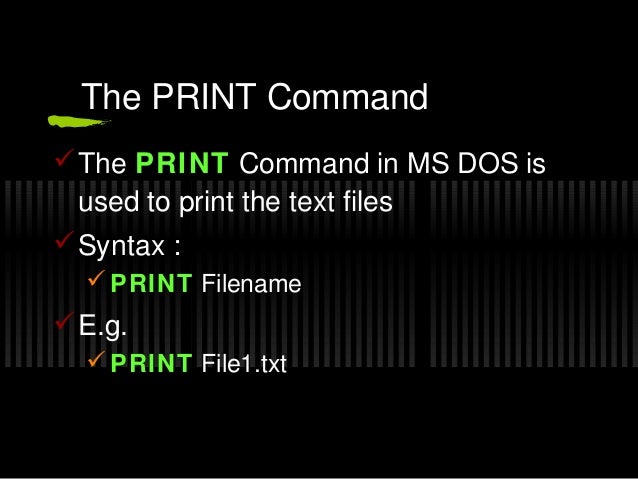This article needs additional citations for. Unsourced material may be challenged and removed. (July 2016) () This article presents a list of commands used by, especially as used on -based (PCs). Are not part of the scope of this list. In DOS, many standard were provided for common tasks such as listing files on a disk or moving files. Some commands were built into the command interpreter, others existed as external commands on disk. Over the several generations of DOS, commands were added for the additional functions of the operating system.
Some features of MS-DOS 8.0. D4 B9 10 00 B4 ==>>D4 B9 16 00 B4 FC B9 10 00 B4 ==>>FC B9 16 00 B4 Himem.sys, Emm386.exe and Smartdrv.exe versions that are. File Compare or FC as we will refer to is from here on out. How to Use FC (File Compare) from the Windows Command Prompt.
In the current operating system, a text-mode command prompt window,, can still be used. Contents • • • • • • • • • • • • • • • • • • • • • • • • • • • • • • • • • • • • • • • • • • • • • • • • • • • • • • • • • • • • • • • • • • • • • • • • • • • Command processing [ ] The command interpreter for DOS runs when no application programs are running. When an application exits, if the transient portion of the command interpreter in memory was overwritten, DOS will reload it from disk. Some commands are internal — built into COMMAND.COM; others are external commands stored on disk. When the user types a line of text at the operating system command prompt, COMMAND.COM will parse the line and attempt to match a command name to a built-in command or to the name of an executable program file or on disk.
If no match is found, an error message is printed, and the command prompt is refreshed. External commands were too large to keep in the command processor, or were less frequently used. Such utility programs would be stored on disk and loaded just like regular application programs but were distributed with the operating system. Copies of these utility command programs had to be on an accessible disk, either on the current drive or on the command set in the command interpreter. In the list below, commands that can accept more than one file name, or a filename including wildcards (* and? Standalone Patch L4d2. ), are said to accept a (file specification) parameter. Commands that can accept only a single file name are said to accept a filename parameter.
Additionally, command line switches, or other parameter strings, can be supplied on the command line. Spaces and symbols such as a '/' or a '-' may be used to allow the command processor to parse the command line into filenames, file specifications, and other options. The command interpreter preserves the case of whatever parameters are passed to commands, but the command names themselves and file names are case-insensitive. Many commands are the same across many DOS systems, but some differ in command syntax or name. DOS commands [ ] A partial list of the most common commands for follows below. APPEND [ ] Sets the path to be searched for data files or displays the current search path. The APPEND command is similar to the PATH command that tells DOS where to search for program files (files with a.COM,.
EXEC, or.BAT file name extension). Main article: Attrib changes or views the attributes of one or more files. It defaults to displaying the attributes of all files in the current directory. The file attributes available include read-only, archive, system, and hidden attributes. The command has the capability to process whole folders and subfolders of files, BACKUP and RESTORE [ ] These are commands to and restore files from an external disk.

